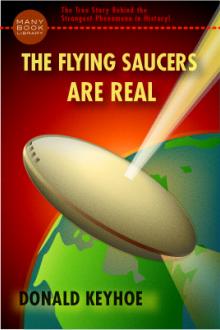The Expression of Emotion in Man and Animals by Charles Darwin (adult books to read TXT) 📕

- Author: Charles Darwin
- Performer: -
Book online «The Expression of Emotion in Man and Animals by Charles Darwin (adult books to read TXT) 📕». Author Charles Darwin
From habit the ears are often held in this same position, and the tail tucked in, when the danger is obviously in front.
I have repeatedly noticed, with a timid terrier of mine, that when she is afraid of some object in front, the nature of which she perfectly knows and does not need to reconnoitre, yet she will for a long time hold her ears and tail in this position, looking the image of discomfort. Discomfort, without any fear, is similarly expressed: thus, one day I went out of doors, just at the time when this same dog knew that her dinner would be brought.
I did not call her, but she wished much to accompany me, and at the same time she wished much for her dinner; and there she stood, first looking one way and then the other, with her tail tucked in and ears drawn back, presenting an unmistakable appearance of perplexed discomfort.
Almost all the expressive movements now described, with the exception of the grinning from joy, are innate or instinctive, for they are common to all the individuals, young and old, of all the breeds. Most of themare likewise common to the aboriginal parents of the dog, namely the wolf and jackal; and some of them to other species of the same group.
Tamed wolves and jackals, when caressed by their masters, jump about for joy, wag their tails, lower their ears, lick their master’s hands, crouch down, and even throw themselves on the ground belly upwards.[4] I have seen a rather fox-like African jackal, from the Gaboon, depress its ears when caressed.
Wolves and jackals, when frightened, certainly tuck in their tails; and a tamed jackal has been described as careering round his master in circles and figures of eight, like a dog, with his tail between his legs. It has been stated[5] that foxes, however tame, never display any of the above expressive movements; but this is not strictly accurate. Many years ago I observed in the Zoological Gardens, and recorded the fact at the time, that a very tame English fox, When caressed by the keeper, wagged its tail, depressed its ears, and then threw itself on the ground, belly upwards. The black fox of North America likewise depressed its ears in a slight degree. But I believe that foxes never lick the hands of their masters, and I have been assured that when frightened they never tuck in their tails.
If the explanation which I have given of the expression of affection in dogs be admitted, then it would appear that animals which have never been domesticated—namely wolves, jackals, and even foxes—
have nevertheless acquired, through the principle of antithesis, certain expressive gestures; for it is Dot probable that these animals, confined in cages, should have learnt them by imitating dogs.
[4] Many particulars are given by Gueldenstadt in his account of the jackal in Nov. Comm. Acad. Sc. Imp. Petrop.
1775, tom. xx. p. 449. See also another excellent account of the manners of this animal and of its play, in `Land and Water,’ October, 1869. Lieut. Annesley, R. A., has also communicated to me some particulars with respect to the jackal.
I have made many inquiries about wolves and jackals in the Zoological Gardens, and have observed them for myself.
[5] `Land and Water,’ November 6, 1869._Cats_.—I have already described the actions of a cat
(fig. 9), when feeling savage and not terrified.
She assumes a crouching attitude and occasionally protrudes her forefeet, with the claws exserted ready for striking.
The tail is extended, being curled or lashed from side to side.
The hair is not erected—at least it was not so in the few cases observed by me. The ears are drawn closely backwards and the teeth are shown. Low savage growls are uttered.
We can understand why the attitude assumed by a cat when preparing to fight with another cat, or in any way greatly irritated, is so widely different from that of a dog approaching another dog with hostile intentions; for the cat uses her forefeet for striking, and this renders a crouching position convenient or necessary.
She is also much more accustomed than a dog to lie concealed and suddenly spring on her prey. No cause can be assigned with certainty for the tail being lashed or curled from side to side.
This habit is common to many other animals—for instance, to the puma, when prepared to spring;[1] but it is not common to dogs, or to foxes, as I infer from Mr. St. John’s account of a fox lying in wait and seizing a hare.
We have already seen that some kinds of lizards and various snakes, when excited, rapidly vibrate the tips of their tails.
It would appear as if, under strong excitement, there existed an uncontrollable desire for movement of some kind, owing to nerve-force being freely liberated from the excited sensorium; and that as the tail is left free, and as its movement does not disturb the general position of the body, it is curled or lashed about.
All the movements of a cat, when feeling affectionate, are in complete antithesis to those just described. She now stands upright, with slightly arched back, tail perpendicularly raised, and ears erected; and she rubs her cheeks and flanks against her master or mistress.
The desire to rub something is so strong in cats under this state of mind, that they may often be seen rubbing themselves against the legs of chairs or tables, or against door-posts. This manner of expressing affection probably originated through association, as in the case of dogs, from the mother nursing and fondling her young; and perhaps from the young themselves loving each other and playing together.
Another and very different gesture, expressive of pleasure, has already been described, namely, the curious manner in which young and even old cats, when pleased, alternately protrude their forefeet, with separated toes, as if pushing against and sucking their mother’s teats.
This habit is so far analogous to that of rubbing against something, that both apparently are derived from actions performed during the nursing period. Why cats should show affection by rubbing so much more than do dogs, though the latter delight in contact with their masters, and why cats only occasionally lick the hands of their friends, whilst dogs always do so, I cannot say. Cats cleanse themselves by licking their own coats more regularly than do dogs.
On the other hand, their tongues seem less well fitted for the work than the longer and more flexible tongues of dogs.
[1] Azara, `Quadrupedes du Paraquay,’ 1801, tom. 1. p. 136.
Cats, when terrified, stand at full height, and arch their backs in a well-known and ridiculous fashion. They spit, hiss, or growl.
The hair over the whole body, and especially on the tail, becomes erect.
In the instances observed by me the basal part of the tail was held upright, the terminal part being thrown on one side; but sometimes the tail (see fig.
15) is only a little raised, and is bent almost from the base to one side.
The ears are drawn back, and the teeth exposed. When two kittens are playing together, the one often thus tries to frighten the other.
From what we have seen in former chapters, all the above points of expression are intelligible, except the extreme arching of the back.
I am inclined to believe that, in the same manner as many birds, whilst they ruffle their feathers, spread out their wings and tail, to make themselves look as big as possible, so cats stand upright at their full height, arch their backs, often raise the basal part of the tail, and erect their hair, for the same purpose. The lynx, when attacked, is said to arch its back, and is thus figured by Brehm. But the keepers in the Zoological Gardens have never seen any tendency to this action in the larger feline animals, such as tigers, lions, &c.; and these have little cause to be afraid of any other animal.
Cats use their voices much as a means of expression, and they utter, under various emotions and desires, at least six or seven different sounds. The purr of satisfaction, which is made during both inspiration and expiration, is one of the most curious.
The puma, cheetah, and ocelot likewise purr; but the tiger, when pleased, “emits a peculiar short snuffle, accompanied by the closure of the eyelids.”[7] It is said that the lion, jaguar, and leopard, do not purr.
Horses.—Horses when savage draw their ears closely back, protrude their heads, and partially uncover their incisor teeth, ready for biting. When inclined to kick behind, they generally, through habit, draw back their ears; and their eyes are turned backwards in a peculiar manner.[8] When pleased, as when some coveted food is brought to them in the stable, they raise and draw in their heads, prick their ears, and looking intently towards their friend, often whinny.
Impatience is expressed by pawing the ground.
[7] `Land and Water,’ 1867, p. 657. See also Azara on the Puma, in the work above quoted.
[8] Sir C. Bell, `Anatomy of Expression,’ 3rd edit. p. 123. See also p.
126, on horses not breathing through their mouths, with reference to their distended nostrils.
The actions of a horse when much startled are highly expressive.
One day my horse was much frightened at a drilling machine, covered by a tarpaulin, and lying on an open field. He raised his head so high, that his neck became almost perpendicular; and this he did from habit, for the machine lay on a slope below, and could not have been seen with more distinctness through the raising of the head; nor if any sound had proceeded from it, could the sound have been more distinctly heard.
His eyes and ears were directed intently forwards; and I could feel through the saddle the palpitations of his heart.
With red dilated nostrils he snorted violently, and whirling round, would have dashed off at full speed, had I not prevented him.
The distension of the nostrils is not for the sake of scenting the source of danger, for when a horse smells carefully at any object and is not alarmed, he does not dilate his nostrils.
Owing to the presence of a valve in the throat, a horse when panting does not breathe through his open mouth, but through his nostrils; and these consequently have become endowed with great powers of expansion. This expansion of the nostrils, as well as the snorting, and the palpitations of the heart, are actions which have become firmly associated during a long series of generations with the emotion of terror; for terror has habitually led the horse to the most violent exertion in dashing away at full speed from the cause of danger.
Ruminants.—Cattle and sheep are remarkable from displaying in so slight a degree their emotions or sensations, excepting that of extreme pain.
A bull when enraged exhibits his rage only by the manner in which be holds his lowered head, with distended nostrils, and by bellowing.
He also often paws the ground; but this pawing seems quite different from that of an impatient horse, for when the soil is loose, he throws up clouds of dust. I believe that bulls act in this manner when irritated by flies, for the sake of driving them away. The wilder breeds of sheep and the chamois when startled stamp on the ground, and whistle through their noses; and this serves as a danger-signal to their comrades.
The musk-ox of the Arctic regions, when encountered, likewise stamps on the ground.[9] How this stamping action arose I cannot conjecture; for from inquiries which I have made it does not appear that any of





Comments (0)